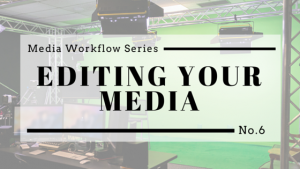Now that you’ve shot your footage and imported it into your preferred editing program, it’s time to get to work on editing your project!
Don’t have editing software on your computer? No problem! The Media Commons workstations are equipped with Adobe Premiere Pro, Adobe After Effects, Audacity, and more. Check out Media workflow tutorial #5 for more information!
Lynda.com
If you are new to editing, Lynda.com is a fantastic place to start. It provides videos and tutorials for a wide variety of editing software, and you have a free membership as a University of Illinois student. Log in at go.illinois.edu/lynda
Here are links to some of our favorite Lynda tutorials:
Editing Green Screen Footage
If you shot footage in the Media Commons video studio, chances are you will need to replace the green screen with a different image. Check out our previous blog posts that describes how to edit a green screen: http://publish.illinois.edu/mediacommonsblog/2015/08/26/how-to-edit-green-screen-footage/
This Lynda tutorial is another great resource for editing a green screen in Premiere Pro: http://www.premiumbeat.com/blog/chroma-key-in-premiere-pro/
Editing Footage from Multiple Cameras (Multicam)
Multicam is especially useful when shooting a video in which the subject or subjects remain seated or standing in the same position, such as an interview, testimonial, etc. With a multicam set-up, you can cut between different shots, as it can be jarring to cut during one continuous take if there is any slight movement. This way, you can combine footage from different takes and make the video flow much better.
Check out this Lynda tutorial on editing multicam footage: http://www.lynda.com/Premiere-Pro-tutorials/Syncing-your-multicam-group-clips/371692/414035-4.html
Editing Audio
Editing programs will provide visual information on your audio levels with meters and color cues. You can manually adjust the volume if you find some audio to be too loud or too quiet. You should aim for audio levels between -6 and -12 dB. In some cases, audio cannot be improved drastically if there is a fair amount of distortion or feedback, but there are effects that can be applied. In Premiere, there are tools such as peak limiter and DeHummer. Other audio effects such as Crossfades can be applied to your audio clips. These are located in the “audio transitions” folder. More information about audio editing in Premiere Pro can be found here.
Want information about an editing program we haven’t mentioned? We recommend exploring Lynda.com for even more tutorials!

